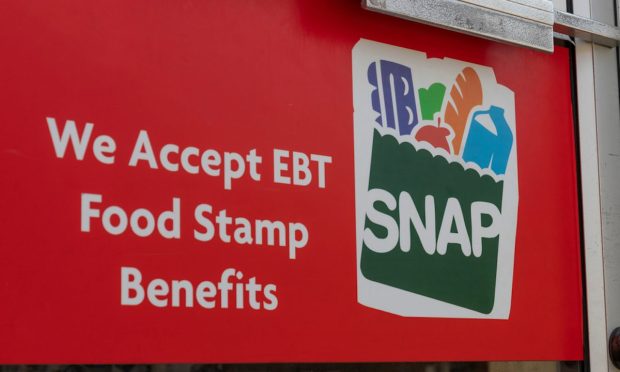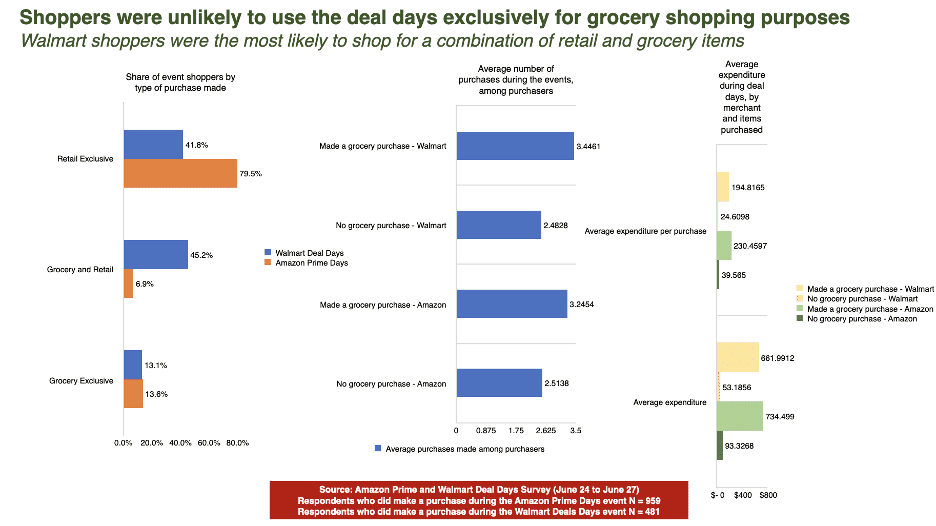Biden’s Food Stamps Boost Could Be Good News For Amazon And Walmart eGrocery

The Biden administration’s confirmed increase to the Supplemental Nutrition Assistance Program (SNAP) Electronic Benefit Transfer (EBT) could be good news for Walmart, which has already been seeing strong grocery sales in recent months. It could be even better news for Amazon, which can draw more grocery shoppers into its Amazon Prime program when the option is financially more feasible to more people.
The change will boost the program’s monthly assistance by about 30 percent, growing from $121 (the pre-pandemic value to which it was set to return on Sept. 30) to $157, creating additional opportunity for grocers that already benefit from the program.
Read more: After Moment Of Panic, Walmart Widens The Gap In Groceries
In 2020, the total cost of the food stamp program was $90 billion, according to the United States Department of Agriculture (USDA). Additionally, in 2020, NielsenIQ/TDLink data finds, grocery sales totaled $772 billion, suggesting that the program accounts for around 12 percent of all grocery sales. A 30 percent increase would grow that annual value to about $117 billion, enabling more people to spend more money at more grocers, with the majority of that spending boost likely to go to grocers that have a large presence in lower-income communities.
With the shift toward online grocery, this increase could be especially good news for grocers that offer the ability to pay for online purchases with EBT cards. Walmart and Amazon are both leaders in online food stamp acceptance, with Walmart accepting them in 44 states and Amazon in 46. One report from late in 2020 found that 18 percent of all SNAP EBT payments go to Walmart.
One of the central ways that both Walmart and Amazon have been boosting their eCommerce spending is through designated discount days — Deal Days for the former and Prime Day for the latter.
Karen Webster noted in a recent story that 6 percent of low-income Amazon Prime Days customers purchased groceries, while that number was only slightly higher — 7 percent — for Walmart Deal Days customers. “EBT acceptance by Amazon, along with discounted Prime membership status for that segment of consumers, seems to have leveled the grocery playing field, at least as far as Prime Day/Deal Days is concerned,” she noted.
You may also like: Can Walmart+ Save Walmart From Amazon?
With measures that level the playing field such as online food stamp payment capabilities, Webster said, many turn toward Amazon Prime to meet their grocery needs — during the discount days, Amazon Prime shoppers spent around 11 percent more on groceries than their Walmart+ counterparts.
Still, PYMNTS data from a survey of 2,297 U.S. consumers conducted between June 24 and June 27 found that 58 percent of Deal Days shoppers purchased groceries, compared to just 21 percent of Prime Day shoppers, showing Walmart’s continued clear lead in online grocery. Plus, Walmart Deal Days shoppers who made a grocery purchase spent on average 12 times more than those who did not, while Amazon Prime Day shoppers who made a grocery purchase spent eight times more than those who did not, suggesting that Walmart has the lead in using grocery to drive up basket size. If the growth of SNAP EBT payments makes it possible for more consumers to take advantage of Prime’s offerings, perhaps the playing field will level out.

